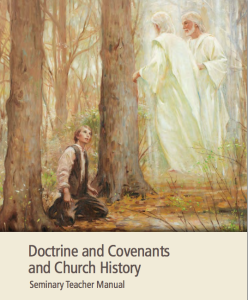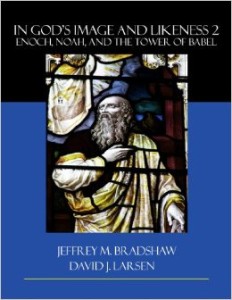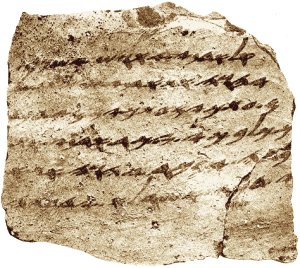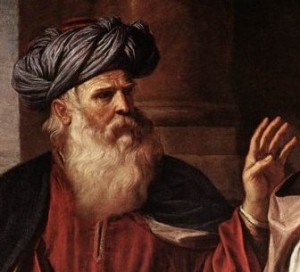*This post was originally written by Tom Stringham at his blog Virtuous Society. It has been slightly modified with the author’s permission.
Statistics tell stories, and this is something that Mormons know well. While many demographic indicators speak to the social health of Mormon culture, there are some that do not.
A well-known example: in 2009, a study found that Utah had the highest rate of online porn subscriptions of any state in the US. Latter-day Saints, who form a majority of Utah’s population, profess a belief in avoiding pornography.
New data, however, offer a conclusion opposite to the findings of the 2009 study, suggesting that Utah and other states with high Mormon populations have abnormally low rates of porn use.
Background
The Mormon blogosphere (or “Bloggernacle”) lit up with commentary after the release of the famous original study, and the conclusions of the paper became a focal point of the growing discourse about sexuality among Mormons online. Many major blogs addressed the issue head on, as in posts here and here.
After a few months, the Utah porn statistic became entrenched in conventional wisdom. Blogs would make reference to the statistic, and having drawn their conclusions, move on to provide explanations and accusations regarding the phenomenon, as represented here, here, here, here and here. The popular narrative of the shamed, porn-watching Mormon is well-represented by the views of Joanna Brooks, a well-known observer of Mormon religious practices and culture, who believes some of the religion’s teachings:
We all know LDS Church leaders have been emphasizing the dangers of pornography, especially to young men. And yet, the statistics have shown that Utah has the highest rate of home online porn subscription.
Still, this seemingly contradictory pair of facts seems to suggest that there’s something compulsive going on with porn in the world of Mormonism. Mormon communities are emphatic about chastity—because it is a commandment. But Mormonism’s emphasis on chastity can impact the way Mormons feel about healthy sexuality, tinging it with shame, mystery, guilt, and unrealistic expectations. [link]
For five years the conversation on Mormonism and porn has been defined by this single data point, and psychological and sociological analyses of Mormon culture, like Brooks’, have rested upon it.
The paper’s accompanying fact that Idaho (25% Latter-day Saints) had the lowest rate of porn subscriptions per thousand broadband users in the US has only very rarely been cited. Also seldom reported is the fact that the data in the 2009 study was from an unnamed vendor, whose users may or may not be representative of the US population.
The New Data
Last week, the third largest pornography website in the United States released data on its annual pageviews per capita by state. A chart of pageviews by state is shown at right.

The chart as presented by the website is limited in its applicability, because relevant demographic variables are left uncontrolled for, but the conclusion nevertheless appears favorable for Mormons. Utah’s pageviews per capita in 2013 were 40th in the US. Idaho and Wyoming, the other states with large Mormon populations, are even lower on the list, at 49th and 46th respectively.
In order to find a more meaningful interpretation of the data that would adjust for possible confounding variables, I went to the trouble of gathering the most recent demographic data I could find for each state, so I could perform a controlled regression. I included variables for GDP per capita, internet penetration per capita, male/female ratio, age distribution, race and each state’s marriage rate.
Using ordinary linear regression methods, I generated a difference between a state’s actual views per capita and the views that would be predicted based on demographic variables. In this analysis, Utah’s deviation from the views predicted by demographics was 45th in the United States, while Wyoming was 46th and Idaho came 50th.
In other words, when controlling for other variables, there is an even stronger suggestion than before that Mormon populations do not have abnormally high rates of porn use (at least as represented by the website). We might even suggest that their rates of use are especially low.
I also decided to directly analyze the relationship between Mormonism and porn use (again, as measured by this particular metric). This is something the author of the 2009 study did not do. I included a variable for the percentage of a state’s population that is LDS, as measured by official LDS membership statistics and the most recent population projections based on census data.
The regression finds, roughly speaking, when controlling for the variables already mentioned, that a 10 percentage point increase in a state’s LDS population is associated with an approximate 16% decrease in the amount of porn consumption.
This result is highly significant, even at the 0.001 level. In fact, “percentage of Latter-day Saints in population” had a higher statistical significance than any other single variable I included in the regression (the next most significant variable was internet penetration). The proportion of overall explained variation in the regression is 66%, and a test for overall significance is highly conclusive, suggesting that the model as estimated is meaningful and significant.
Why do the results appear so different for these two sets of data? It’s almost impossible to know. The author of the 2009 study did not reveal the identity of the “top ten” porn vendor who gave him credit card data, and he admitted that there was no way to evaluate whether the users of that vendor were representative of the porn industry in general. His data, which was gathered from 2006 to 2008, also did not measure consumption, but rather paid subscriptions. A possible explanation of the discrepancy is that Utah’s porn use is skewed toward paid pornography.
In fairness, we cannot be sure that the website’s users are representative of the industry overall. However, in this case we are aware of the identity of the provider, which provides both paid and unpaid content.
Statistics tell stories, and the famous “Utah porn statistic” has told far more stories than it is worth. If critics of Mormon teachings on porn and sexuality would like to continue promoting the idea that a conservative sexual culture has backfired on itself, then they will have to confront a less convenient set of data.
Here is another narrative, that perhaps time and further analysis will prove: Mormons view less porn than others, and those conservative sexual teachings are working.
EDIT: In response to a request, I obtained recent Gallup data on religiosity by state, and added these variables to my regression, in order to separate the effects of religiosity in general and religious engagement by Mormons. The same general results persist: a 10 percentage point increase in a state’s LDS population is associated with an approximate 17% decrease in porn pageviews. The p-value is once again very low, at 0.002. In deviations from projections including religiosity, Utah is ranked 38th, Idaho 50th, and Wyoming 46th. The differences from the earlier analysis are small and require no changes to the conclusions I suggested above.
Technical notes: I used Stata to perform the regressions mentioned. Data were collected from government sources wherever possible. The results were consistent even when using logarithmic variables for pageviews and GDP. I learned the relevant statistical methods as part of the completion of the econometric portion of my Honours economics degree.






